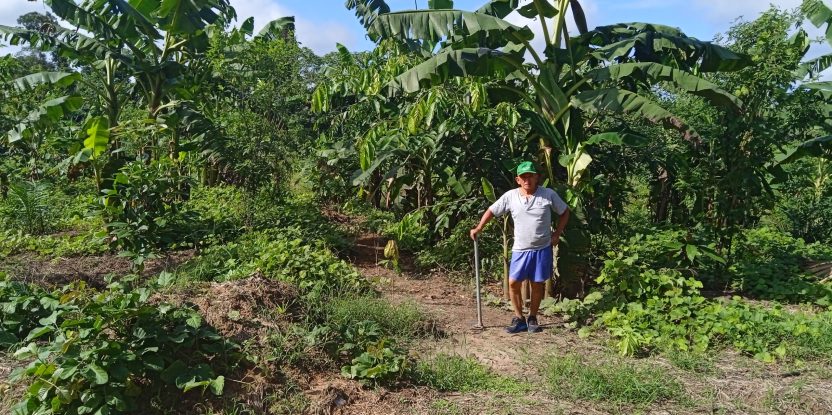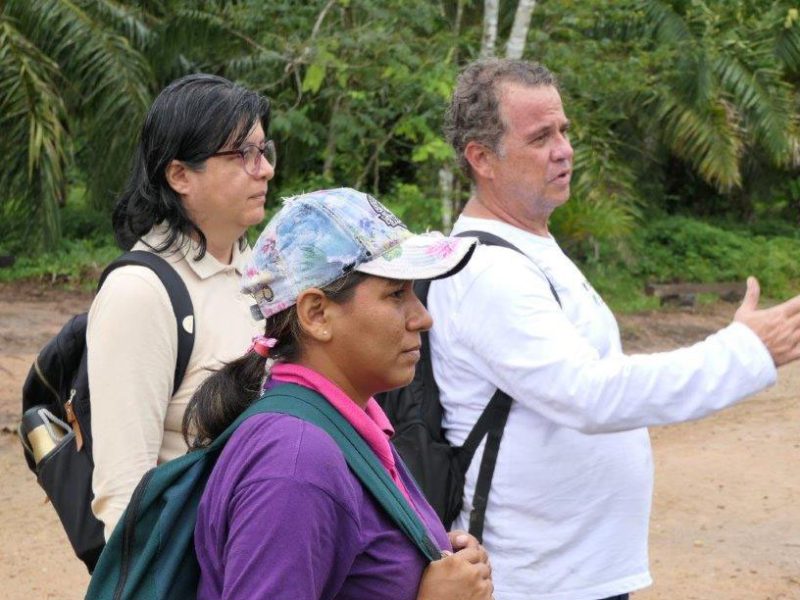
“Simply replicating a pre-existing model and thinking it will be successful won’t work. What works is looking at the context and coming up with a tailored solution.” This is the conclusion that Andrew Miccolis, lead scientist for the Center for International Forestry Research and World Agroforestry (CIFOR-ICRAF) and its country coordinator for Brazil, has arrived at after over a decade of leading initiatives aimed at the evaluation, design and scale-up of agroforestry options.
Some of his colleagues have arrived at the same conclusion. In a special issue of the journal Experimental Agriculture, CIFOR-ICRAF’s director of agroecology, Fergus Sinclair, and Bangor University scientist Ric Coe put forward evidence to suggest that the ‘Options by Context’ (OxC) approach represents a paradigm shift in agronomy, driven by various OxC interactions. These interactions are based on farmer circumstances and affect decision making.
“It’s a way of thinking about and assessing the best possible solution for that context, and developing it with everyone involved,” said Miccolis. We interviewed him to find out more.
Q: What is the Options by Context approach and why is it useful for agroforestry?
A: The Options by Context approach aims to increase the adoption of agroforestry practices at different scales (plots, farms, landscapes) to benefit a larger number of people. Based on this approach, we recognise that adoption and success factors for implementing an agroforestry practice depend on the circumstances in which families operate and the socio-ecological, market, governance and institutional contexts.
Q: How can this approach be put into practice?
A: The OxC approach uses a methodology that starts with diagnosis, which is an attempt to understand the context at different scales. The diagnosis tells us about farmers’ goals and aspirations, drivers of degradation, biophysical characteristics (climate, soil, etc.) and access to resources that facilitate the adoption of agroforestry (such as finance, labour, knowledge, social organization, and access to policies and market). This information helps us to understand the constraints to adoption.
The next step is co-designing agroforestry options, by outlining agroecological practices and selecting species based on the diagnosis and certain criteria. After that is the implementation stage, where we establish demonstration plots together with the farmers and technicians. The aim is to develop agroforestry systems that are tailored to the local context, which could be a single family, a community or a specific area. We have created some tools for developing these systems, such as Planning and Evaluation for Decision-Making in Agroforestry Systems (PLANTSAFS) and its Amazon-specific counterpart (AmazonSAF).
Lastly, we monitor and analyse trade-offs – i.e. where we lose and where we gain. One system might be appealing in ecological terms but not as appealing in financial terms, and another might work from a social perspective but might not from a financial perspective, so we go back to the co-design stage to improve it. We end up with different systems, depending on the context.
Why is this approach important for advancing agroforestry?
If we understand the context, we can reach policymakers, government, agencies and scientists, and perhaps even change or influence the context itself. When carrying out such assessments on say 20 or 50 farms, we usually find that some patterns repeat themselves. For example, if a farm is lacking in skilled labour, seeds, seedlings, greater social organization, etc. the OxC helps us to analyze the situation and co-design systems for that specific context.

Andrew Miccolis (right) is a principal scientist at CIFOR-ICRAF and its country coordinator for Brazil. Photo by Valentina Robiglio/CIFOR-ICRAF
How is this approach sustainable in terms of adoption and scaling up?
Adopting an agroforestry system requires adaptation. The central theme of our approach, our theory of change – which has been shown to work in practice – is that when you adapt the solution so that people take ownership of it, adoption happens. We provide the structure for that.
Just taking and selling a model system doesn’t work for scaling up agroforestry, because usually people won’t adopt it – and if they do, it won’t be done as well as it could be, because they don’t have the necessary resources. For example, they might not have the labour, they could lack fertilizer, or they might not have the knowledge to manage a specific system. We’re not saying an agroforestry system is the end goal; we’re encouraging people to use this method so they can come up with a system that best suits the farmer, based on evidence and the diagnosis.
What does the success of this approach depend on?
The approach can work in any context, but adoption is another matter. It depends on external, contextual factors. The OxC approach helps you identify what these factors are; that’s why it works in any context. Here’s an example: we held workshops with farmers and livestock breeders in Minas Gerais and asked how many of them had heard of agroforestry; no-one raised their hand. They’d never even heard of it. So we knew there was a serious knowledge gap and we invested a lot in that. The approach helps people to analyze the situation and develop what we call governance, as well as technical solutions.
What are the challenges of moving forward with OxC?
The biggest challenge isn’t the farmers; it’s educating the technical experts on this approach. They are generally used to providing ‘ready-made’ solutions, not building something collaboratively. In our experience, most technicians really like the OxC approach, but since agroforestry projects don’t invest much in it, the approach ends up being more time-consuming and resource-intensive.
Another challenge is making the approach work in short-term projects with limited funding. It’s vital that we continue with the work we’ve started. For example, we gain a great deal from our work in the demonstration plots, as they’re only ever successful when farmers are involved and interested – as is the case in Ucayali and San Martín in Peru.
Cooperation agencies and donors have an opportunity here: these demonstration plots are the future of scaling up agroforestry in the Peruvian Amazon. They’re leading the way, and will be used as a technological benchmark: as centres for learning and innovation, exchanging experiences, and inspiring farmers and technicians from other regions.
We want you to share Forests News content, which is licensed under Creative Commons Attribution-NonCommercial-ShareAlike 4.0 International (CC BY-NC-SA 4.0). This means you are free to redistribute our material for non-commercial purposes. All we ask is that you give Forests News appropriate credit and link to the original Forests News content, indicate if changes were made, and distribute your contributions under the same Creative Commons license. You must notify Forests News if you repost, reprint or reuse our materials by contacting forestsnews@cifor-icraf.org.